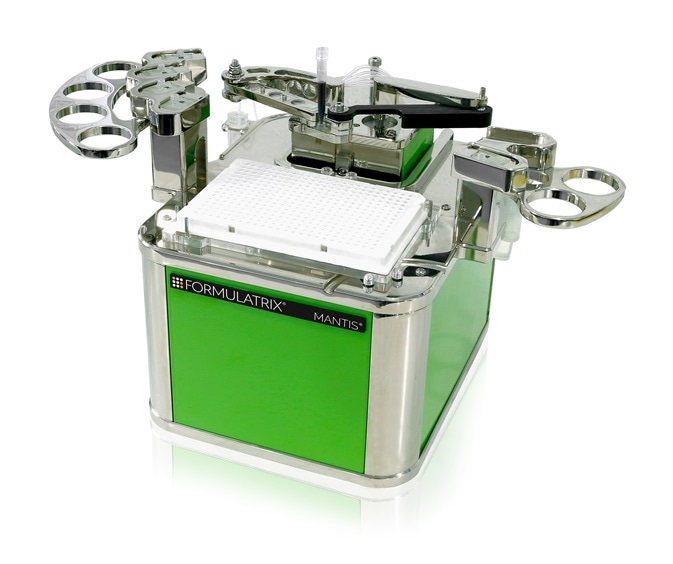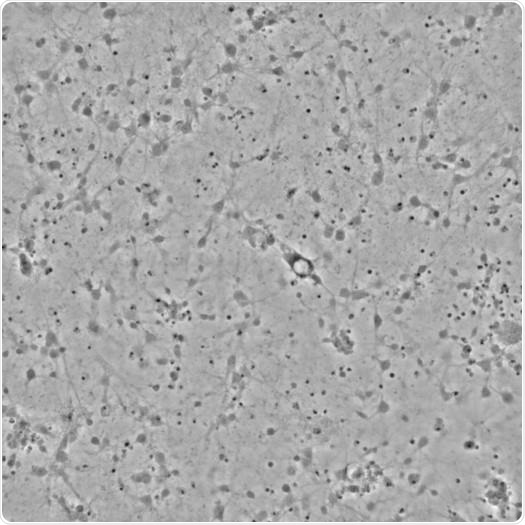Changes in synaptic connections are associated with almost all brain disorders. Synapse loss is an especially profound issue in brain disorders that attack cognitive function, like Alzheimer’s disease and schizophrenia.
A high content, primary neuron based, screening platform has been designed to enable the development of new chemical probes that could triggers growth in synaptic connectivity as part of a research program.
This program was aimed at finding new mechanisms that trigger growth in neural connectivity as a tactic in combatting these illnesses. These new probes will act as developmental platforms for future drugs that can treat a broad variety of brain disorders.1
To be able to guarantee batch to batch results can be reproduced as part of a high content screening platform, it is essential that cells are plated consistently and that the cells are viable throughout the whole experiment. This article discusses an experimental procedure that emphasizes the suitability of the MANTIS® liquid handler as a dependable, accurate and strong solution for dispensing even the most sensitive primary neuronal cells.

Image Credit: FORMULATRIX
Materials
- 1x PDL coated 1536 well Aurora Microplate
- 50 mL culture medium comprising:
- 1X Neurobasal-A medium
- 2.5% Glutamax-I
- 2% B-27 Supplement
- 0.02% Gentamicin Reagent
- 10 uM FUDR
- 5x106 primary cortical cells extracted from P0 mouse pups
- GE IN Cell Analyzer 6000 laser-based confocal imaging platform
- Eppendorf 5810 R Centrifuge
Methods
- Neuronal cells were plated across 1536 well Aurora microplate
- 15 μL of culture medium containing 3 x 103 cells was dispensed to each of the 1536 wells
- Plates were centrifuged at 200 g for 1 min
- Cells were incubated for seven days with no feeding
- Cells were counted via DIV7 Phase Contrast by the IN Cell Analyzer 6000
Results
After a seven day incubation, the average phase cell count was comparable to a 96 or 384 well plate and the CV of cell count uniformity across the whole 1536 well plate was no more than 10%.

Figure 1. Primary neuronal cells in a single well of a 1536 well Aurora microplate. Image Credit: FORMULATRIX
Conclusion
The Formulatrix MANTIS is consistent in dispensing cells, even in low volume 1536 well format. Furthermore, by using low shear force, gentle, dispensing technology, the instrument promotes prolonged in vitro cell viability.
Acknowledgments
This work was carried out by Chris Hubbs of The Scripps research institute in Jupiter, Florida.
The Scripps Research Institute (TSRI) – one of the world’s largest, private, non-profit research organizations – stands at the forefront of basic biomedical science, a vital segment of medical research that seeks to comprehend the most fundamental processes of life.
Over the last decades, the institute has established a lengthy track record of major contributions to the betterment of health and the human condition.2
References
- Research:The Scripps Research Institute. https://www.scripps.edu/
- About the Scripps Research Institute. http://www.scripps.edu/about/
About FORMULATRIX
FORMULATRIX® was established in 2002 to provide protein crystallization automation solutions. Since then, we've started developing other laboratory automation solutions including the next generation of liquid handlers using microfluidic technology.
Headquartered in Bedford, Massachusetts, we supply software and robotic automation solutions to leading pharmaceutical companies and academic research institutions around the world. Our team works tirelessly to provide the best products in the industry with support that is second to none.
Sponsored Content Policy: News-Medical.net publishes articles and related content that may be derived from sources where we have existing commercial relationships, provided such content adds value to the core editorial ethos of News-Medical.Net which is to educate and inform site visitors interested in medical research, science, medical devices and treatments.